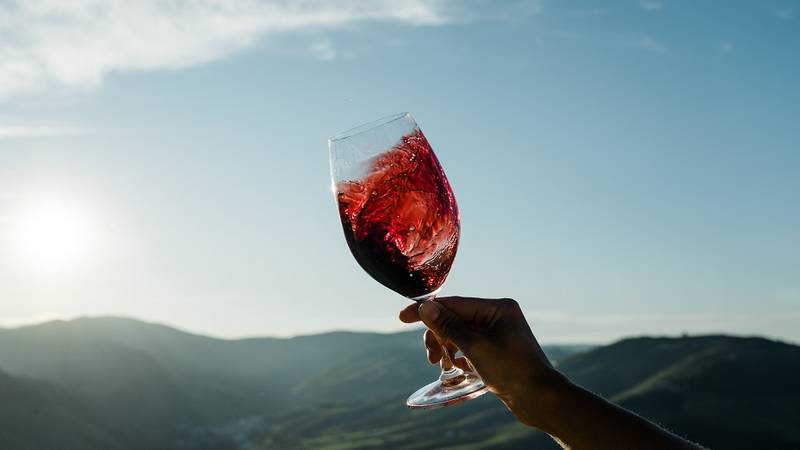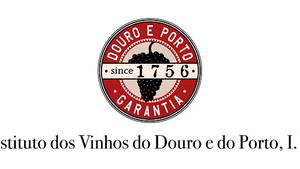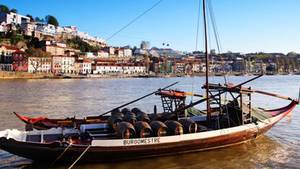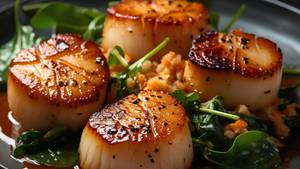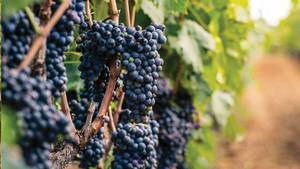The wines known as Port, originate in the Douro Valley of Portugal. Portugal, found in the south-western corner of Europe’s Iberian Peninsula (shared with Spain) is one of the world’s oldest wine producing nations. One of the most unique features of Portuguese wines, and in fact the wines of the Douro, a region in the north of the country, is the use of indigenous varietals. Unlike other regions who bend to the tastes of international export opportunities, the winemakers of Portugal, and specifically the Douro, where Portugal’s legendary Port wines are made, prefer to plant and work with the country’s own native grapes.
Douro and Porto
The inland Douro Valley and city of Porto, sitting on the Atlantic coast, work together to create and distribute the wines that many people associate with Portugal. Douro is where the wines are produced, where the vines live, grow and originally shaped. Porto and neighbouring Vila Nova di Gaia are where the wines are matured into what we find on our tables before being shipped all over the world. Both areas share the Douro river, which winds from north to south between the two.
Douro is arguably the most renowned DOC (DOP) area in Portugal as it is the region where Port is made. In the Northeast region of the country, Douro is surrounded by the Marão and Montemuro mountain ranges, which shield the region from westerly Atlantic winds. Table red wines, and whites are gaining popularity here as well, but many know the region for the sweet, fortified wines which have been renowned for centuries.
The Douro Valley is one of the world’s oldest viticultural areas. The region is known for its rugged, mountainous landscapes although region is home to varying micro-climate discovered along the course of the Douro River. The Douro Demarcated Region itself boasts approximately 40,000 hectares of vines, with the land worked by approximately 25,000 growers, each owning only an average of 1.7 hectare of vineyards.
Climate and Soil
While most of the wine regions in Portugal do fall under a broader Atlantic-influenced maritime climate. There are over 200 microclimates (one of the highest numbers per square metre in the world). As an Atlantic Maritime climate, sea breezes from the west keep temperatures under control in both winter and summer. Areas along the coast tend to see more precipitation and mild climates, with more elevated, inland areas like Douro getting those hot, dry summers and very cold, harsh winters.
Within the Douro, its sub-regions have their own unique climate variances. These can be explained due to proximity to the Atlantic, the higher altitudes and varying exposures between the vineyards. The lower lying areas, closer to the Atlantic have a broad tendency to be cooler with higher precipitation levels, while higher inland areas boast hotter, drier summer temperatures. Vineyards here grow on tough infertile soils that contribute to the density and richness of the wines. The region encompasses 250 000ha of schist soil. In combination with a be described as “nine months of winter and three months of hell” wine producers are both challenged with difficult conditions but rewarded with the quality of grapes these obstacles result in.
Sub-Regions
There are three sub-regions, which are divided from west to east – the Baixo Corgo, Cima Corgo and Douro Superior.
- Baixo Corgo was the first area where Port was produced, and boasts green, fertile landscapes producing lighter and fresher styles of wine.
- Cima Corgo is considered the heart of fine Port production, where both classic Port wine and many beautiful unfortified wines are produced. With its steeper valleys and more rugged landscapes, Cima Corgo sees hot summers, extremely cold winters and as a results yields are lower here.
- Douro Superior is a region in the far inland, close to the Spanish border. It is the driest of the three regions. Here, vineyards are exposed to very hot summers and equally cold winters occur here. By sheer landmass it is the biggest of the sub-regions, but productivity is lower here due to the climate, resulting in low yields.
Key Grape Varietals
There are over 115 varietals in the Douro which are “allowed” to be used in the production of Port. Some of the most popular and well-known include Touriga Nacional, Tinta Roriz (known as Tempranillo in Spain), Touriga Franca, Tinta Barroca, Tinto Cão, Tinta Amarela, Sousao, and Trincadeira, and increasingly more white wine producing grapes such as Gouveio, Malvasia Fina, Rabigato and Viosinho.
About Port
Port is a fortified wine, with higher alcohol than other styles of wine. Styles can range from dry, to very sweet, and flavours vary depending on the style and ageing. One of the main goals when producing Port is to create wines reflect of their place and style, but also reflects the individual personality of the “house”. Wines are often made by blending from different vintages, vineyards, and ageing vessels. All of these winemaking decisions along with the specific terroir of the vineyards determine the end product, and what makes each Quinta’s Port wines both reflective of the Port’s historical styles but unique and reflective of their own style.
Styles of Port
There are four main styles of Port, with distinctly different pro-files but all bearing the same characteristic hallmarks: a rich, intense and persistent aroma and flavour and a high alcohol content, between 18 per cent abv and 22 per cent abv.
White Port
Produced from white grapes according to the same method used for Red Ports, this wine offers a world of choice, with colours that range from pale white to gold and intense flavours that go from the very dry to the very rich and sweet.
Ruby Port
Full-bodied, rich and powerful, this wine is aged in large stain-less steel or oak vats so that it retains its original characteristics reminiscent of fresh red fruits such as cherries and strawberries. Vintage stands out from all Ruby Ports. This extraordinary wine is selected during the finest vintage years for its quality and potential to age slowly in bottle over many years.
Special Category Ruby Ports
Vintage
Produced from grapes of a single harvest, it develops gradually in the bottle for 10 to 50 years. During the first five years, it retains its original intense ruby colour, exuberant aromas of red fruits and wild berries and a taste of dark chocolate, all of which is balanced by strong tannins that make it the perfect accompaniment to desserts rich in chocolate. After ten years in bottle, Vintage takes on garnet tones and a delicious array of ripe fruit aromas and flavours. As the wine matures, its colour turns a rich golden brown and its fruit acquires a greater subtlety and complexity.
Single Quinta Vintage Port
These Vintages are unique in that they are not only the product of a single harvest but also of a single quinta, or wine estate, which makes them truly exceptional.
Late Bottled Vintage (LBV)
This is a Ruby Port from a single year, chosen for its extremely high quality and bottled after ageing for four to six years in wood. LBV Port is deep ruby red, very full-bodied and rich in the mouth and has the particular style and personality of a wine from a single harvest.
Ruby Reserve
Full-bodied, rich and deep ruby red, these wines are frequently the product of a selection of the best Ports made each year, blended together to create a young, powerful, fruity, well-rounded, versatile and intense wine.
Tawny Ports
These are especially chosen for ageing in oak casks. The wine is gradually exposed to air, there is a concentration of flavours and a maturation of colours that go from ruby to tawny, the aromas developing to create complex and subtle flavours of dried fruits, vanilla and caramel. Tawny with an indication of age is produced by blending wood-aged Ports of various years, the resulting wine having all the traits of a Port aged in wood for the length of time mentioned on the label.
Special Category Tawny Ports
10 Year Old Tawny
Aged in wood, these reddish-brown Ports have intense dried fruit and spicy aromas.
20 Year Old Tawny
With colours ranging from reddish-brown to golden amber, these exceptional wines are full of fruity, complex and concentrated aromas and flavours reminiscent of toasted vanilla and dried fruits, with delicate hints of oak.
30 Year Old Tawny
The gradual exposure to air concentrates and intensifies the original fruit of these wines, creating more complex traits where honey and spices are highlighted by marked aromas of dried apricot, hazelnuts and vanilla.
40 Year Old Tawny
These are marvelously concentrated and complex. Intense, they all but explode in the mouth, filling your palate with aromas and flavours that will astound your senses.
Colheita Port
These single vintage Tawnies are aged in cask for a minimum of seven years but can age for up to 100 years. They present a wide range of colours from golden red to amber.
Tawny Reserve
Aged in oak, this wine boasts elegant flavours, the perfect combination of the fruitiness of youth and the maturity of age.
Note: There are also White Colheitas and White Ports with an indication of age.
Rosé Port
Pink in colour, with lively aromas of cherry, strawberry, and raspberry, it should be enjoyed young, chilled, on the rocks or in cocktails.
Food Pairings
Many people think of Port as a dessert wine, or something for a special event or occasion. White and Rosé Ports pair wonderfully with appetizers, semi-firm cheeses, olives and almonds. Many bartenders are reaching for these as elements in cocktails.
Try a white port with appetizers made with goat’s cheese, almonds, smoked salmon or creamy cheeses and impress your guests with something different. Bring in herbal touches to bridge the flavours here. Tawnies are best served chilled and make great aperitifs. Ruby Ports are a perfect companion to many cheeses and rich desserts but are perfect to start or finish a meal all on their own.

